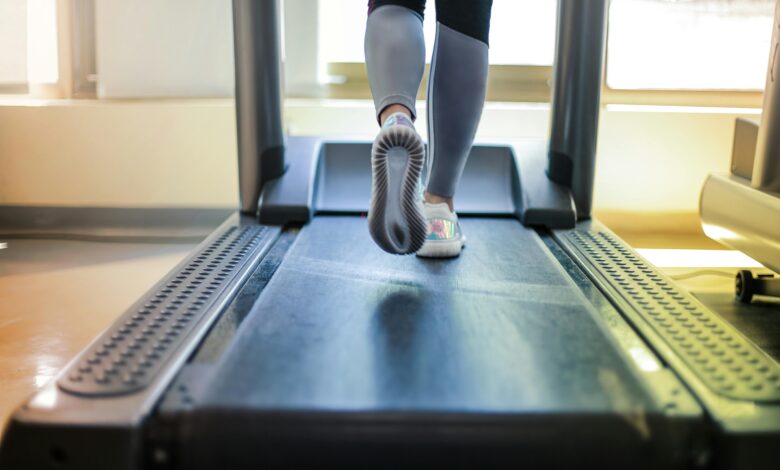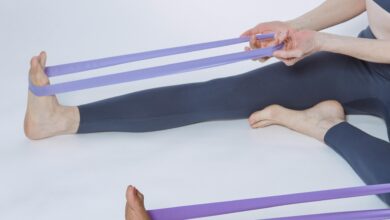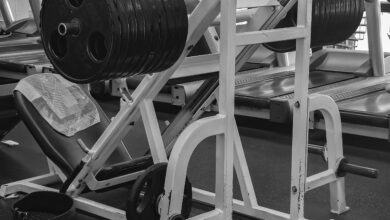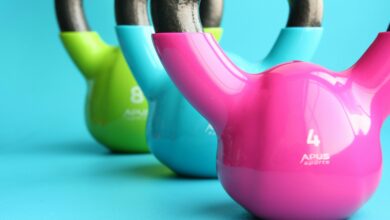How to Choose the Right Treadmill for Your Needs

Investing in a treadmill can be a game-changer for your fitness routine, especially if you prefer working out at home or live in an area with unpredictable weather. However, with so many models and features available, choosing the right treadmill can feel overwhelming. To help you make an informed decision, this guide will walk you through the key factors to consider when selecting a treadmill that aligns with your fitness goals, budget, and space constraints.
1. Determine Your Fitness Goals
The first step in choosing the right treadmill is understanding your fitness objectives. Different treadmills cater to different needs, so consider:
- Walking vs. Running: If you plan to use the treadmill primarily for walking, a basic model with a lower horsepower motor may suffice. For running, you’ll need a more robust machine with a powerful motor and shock absorption.
- Interval Training: If you’re into high-intensity interval training (HIIT), look for a treadmill with programmable workouts and incline/decline options.
- Weight Loss or General Fitness: For weight loss or general cardio, focus on treadmills with reliable tracking features like calorie counters and heart rate monitors.
2. Consider the Motor Power
The motor is the heart of any treadmill, and its power determines how well the machine performs under various conditions.
- Horsepower (HP): Look for continuous duty horsepower (CHP) ratings rather than peak horsepower.
- 2.5–3.0 CHP: Ideal for runners or heavier users.
- 1.5–2.0 CHP: Suitable for walkers or light joggers.
- Noise Level: More powerful motors tend to operate more quietly, which is important if you’ll be using the treadmill in shared spaces.
3. Evaluate the Belt Size
The size of the running belt impacts comfort and usability, especially for taller individuals or those who run at higher speeds.
- Width: A wider belt (18–22 inches) provides more room for natural strides.
- Length: Longer belts (55–60 inches) are better for runners, while shorter belts (48–50 inches) work for walkers.
- Cushioning: High-quality cushioning reduces joint impact and enhances comfort during prolonged use.
4. Assess Space and Folding Options
Before purchasing a treadmill, measure the space where it will be placed. Consider whether you’ll need a folding treadmill to save space.
- Folding Treadmills: Great for small apartments or multipurpose rooms. Ensure the folding mechanism is sturdy and easy to use.
- Non-Folding Treadmills: Typically more stable but require dedicated space.
- Transport Wheels: Look for built-in wheels for easy relocation.
5. Check Incline and Decline Features
Incline and decline settings add variety to your workouts and simulate outdoor terrain.
- Manual vs. Automatic Incline: Automatic incline adjustment is more convenient and allows for mid-workout changes.
- Range: Most treadmills offer inclines up to 10–15%. Some advanced models also include decline options for downhill training.
6. Look for Advanced Technology and Features
Modern treadmills come equipped with a range of tech-savvy features to enhance your workout experience.
- Touchscreen Displays: Larger screens make it easier to track metrics and access entertainment apps.
- Pre-Programmed Workouts: Built-in programs for weight loss, endurance, or interval training can keep your workouts engaging.
- Connectivity: Bluetooth, Wi-Fi, and app integration (e.g., Peloton, Zwift, or Nike Run Club) allow you to sync data and participate in virtual classes.
- Heart Rate Monitoring: Look for treadmills with chest strap compatibility or built-in sensors for accurate heart rate tracking.
7. Prioritize Safety Features
Safety should always be a top priority when using a treadmill.
- Emergency Stop Button: Ensures you can quickly halt the belt in case of an accident.
- Side Rails: Provide stability for mounting and dismounting.
- Child Locks: Prevent accidental starts if children are around.
8. Set a Budget
Treadmills range from budget-friendly models to high-end machines costing thousands of dollars. Determine how much you’re willing to spend and prioritize features accordingly.
- Under $500: Basic treadmills suitable for walking or light jogging.
- $500–$1,500: Mid-range models with better motors, larger belts, and additional features.
- $1,500+: Premium treadmills with advanced technology, commercial-grade durability, and extensive warranties.
9. Read Reviews and Compare Brands
Research reputable brands known for quality and reliability. Popular treadmill manufacturers include:
- NordicTrack: Known for interactive features and iFit integration.
- ProForm: Offers affordable options with solid performance.
- Sole Fitness: Focuses on durability and commercial-grade quality.
- LifeSpan: Emphasizes safety and user-friendly designs.
- Peloton Tread: Combines sleek design with immersive classes.
Read customer reviews to gauge real-world performance, durability, and customer service experiences.
10. Warranty and Customer Support
A good warranty reflects the manufacturer’s confidence in their product. Look for:
- Frame Warranty: Lifetime coverage is standard for quality treadmills.
- Motor Warranty: At least 10 years is ideal.
- Parts and Labor Warranty: 1–2 years of coverage is common.
- Customer Support: Ensure the brand offers responsive and helpful support for troubleshooting or repairs.
11. Test Before You Buy
If possible, visit a store to test the treadmill before purchasing. Pay attention to:
- Comfort: Walk or jog on the belt to assess cushioning and noise levels.
- Ease of Use: Navigate the console to ensure it’s intuitive.
- Stability: Check if the machine wobbles or feels unsteady during use.




